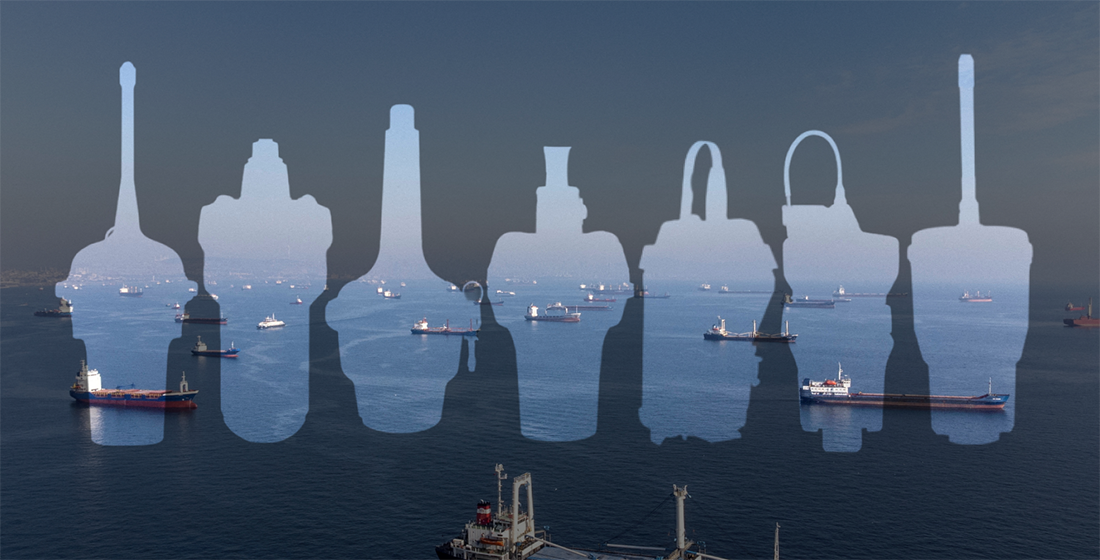GMDSS Equipment carriage requirements for SOLAS ships
Introduction
Equipment requirements for GMDSS ships vary according to the area (or areas) in which a ship operates. Coastal ships for example only have to carry minimal equipment if they do not operate beyond the range of shore based VHF stations (Sea Area A1). Ships which trade further from land are required to carry MF equipment in addition to VHF (Sea Area A2). Ships which operate beyond MF range are required to carry HF and/or Inmarsat equipment in addition to VHF and MF (Sea Areas A3 and A4).

GMDSS Sea Areas
Minimum requirements
Every GMDSS ship is required to carry the following minimum equipment (as defined by SOLAS Chapter IV, regulation 7):
- A VHF radio installation capable of transmitting DSC on channel 70, and radiotelephony on channels 16, 13 and 6;
- A SART (Two on vessels over 500 GRT, one on vessels 300 - 500 GRT);
- A NAVTEX receiver, if the ship is engaged on voyages in any area where a NAVTEX service is provided;
- An Inmarsat EGC receiver, if the ship is engaged on voyages in any area of Inmarsat coverage where MSI services are not provided by NAVTEX or HF NBDP; and
- A 406 MHz EPIRB. Vessels trading exclusively in sea area A1 may fit a VHF DSC EPIRB in lieu of a 406 MHz EPIRB).
Passenger ships
Every passenger ship shall be provided with means of two way on scene radiocommunications for search and rescue purposes using the aeronautical frequencies 121.5 MHz and 123.1 MHz from the position from which the ship is normally navigated.
Equipment carriage requirements for GMDSS Sea Areas
The carriage requirements for the various GMDSS Sea Areas are defined in the following regulations taken from Chapter IV of SOLAS. Detailed guidelines when implementing new GMDSS installations on board SOLAS ships should be referred to IMO Circular COMSAR.1/Circ.32.
Radio equipment – Sea Area A1
In addition to the equipment prescribed in section Minimum requirements, every ship engaged on voyages exclusively in Sea Area A1 shall be provided with either of the following installations for the transmission of ship-shore Distress Alerts:
- A 406 MHz EPIRB, (which may be the one specified in Section Minimum requirements) installed close to, or capable of remote activation from the position from which the ship is normally navigated;
OR
- A VHF DSC EPIRB, installed close to, or capable of remote activation from the position from which the ship is normally navigated;
OR
- A MF DSC System, if the ship is engaged on voyages within coverage of MF coast stations equipped with DSC;
OR
- A HF DSC System;
OR
- An Inmarsat ship earth station.*
* This requirement can be met by Inmarsat ship earth stations capable of two-way communications, such as Inmarsat-B, Fleet 77 or Inmarsat-C ship earth stations. Unless otherwise specified, this footnote applies to all requirements for an Inmarsat ship earth station described in this article.
Radio Equipment - Sea Areas A1 and A2
In addition to the equipment prescribed in section Minimum requirements, every ship engaged on voyages beyond Sea Area A1, but remaining within Sea Area A2, shall be provided with:
- An MF radio installation capable of transmitting and receiving, for distress and safety purposes, on the frequencies:
- 2 187.5 kHz using DSC; and
- 2 182 kHz using radiotelephony.
- A DSC watchkeeping receiver operating on 2 187.5 kHz
AND
Means of initiating the transmission of ship-to shore Distress Alerts by a radio service other than MF, either:
- A 406 MHz EPIRB, (which may be the one specified in Section Minimum requirements) installed close to, or capable of remote activation from the position from which the ship is normally navigated;
OR
- A HF DSC system;
OR
- An Inmarsat ship earth station;*
AND
- The ship shall, in addition, be capable of transmitting and receiving general radio-communications using radiotelephony or direct-printing telegraphy by either:
- A HF radio installation operating on working frequencies in the bands between 1 605 kHz and 4 000 kHz or between 4 000 kHz and 27 500 kHz. This requirement may be fulfilled by the addition of this capability in the MF equipment referred to earlier;
OR
- An Inmarsat ship earth station.*
* This requirement can be met by Inmarsat ship earth stations capable of two-way communications such as Inmarsat-B, Fleet 77 or Inmarsat-C ship earth stations. Unless otherwise specified, this footnote applies to all requirements for an Inmarsat ship earth station described in this article.
Radio equipment - Sea Areas A1, A2 and A3
These vessels have two broad options to satisfy their GMDSS requirements. The options allow a vessel to choose the primary method to be used for ship-shore alerting:
OPTION 1
In addition to the equipment prescribed in section Minimum requirements, every ship engaged on voyages beyond Sea Areas A1 and A2, but remaining within Sea Area A3, shall, if it does not comply with the requirements of Option 2, be provided with:
- An Inmarsat-C ship earth station;
- An MF radio installation capable of transmitting and receiving, for distress and safety purposes, on the frequencies:
- 2 187.5 kHz using DSC;
- 2 182 kHz using radiotelephony.
- A DSC watchkeeping receiver operating on 2187.5 kHz.
AND
Means of initiating the transmission of ship-to-shore Distress Alerts by either:
- A 406 MHz EPIRB, (which may be the one specified in Section Minimum requirements) installed close to, or capable of remote activation from the position from which the ship is normally navigated;
OR
- A HF DSC system.
OR
OPTION 2
In addition to the equipment prescribed in section Minimum requirements, every ship engaged on voyages beyond Sea Areas A1 and A2, but remaining within Sea Area A3, shall, if it does not comply with the requirements of Option 1, be provided with::
- An MF/HF radio installation capable of transmitting and receiving, for distress and safety purposes, on all distress and safety frequencies in the bands between 1 605 kHz and 4 000 kHz and between 4 000 kHz and 27 500 kHz: using DSC, radiotelephony; and NBDP;
- An MF/HF DSC watchkeeping receiver capable of maintaining DSC watch on 2 187.5 kHz, 8 414.5 kHz and on at least one of the distress and safety DSC frequencies 4 207.5 kHz, 6 312 kHz, 12 577 kHz or 16 804.5 kHz; at any time, it shall be possible to select any of these DSC distress and safety frequencies.
AND
Means of initiating the transmission of ship-to-shore Distress Alerts by a radiocommunication service other than HF, either:
- A 406 MHz EPIRB, (which may be the one specified in Section Minimum requirements) installed close to, or capable of remote activation from the position which the ship is normally navigated;
OR
- An Inmarsat ship earth station.*
In addition, ships shall be capable of transmitting and receiving general radiocommunications using radiotelephony or direct-printing telegraphy by an MF/ HF radio installation operating on working frequencies in the bands between 1 605 kHz and 4 000 kHz and between 4000 kHz and 27 500 kHz. This requirement may be fulfilled by the addition of this capability in the MF/HF equipment referred to earlier.
* This requirement can be met by Inmarsat ship earth stations capable of two-way communications such as Inmarsat-B, Fleet 77 or Inmarsat-C ship earth stations. Unless otherwise specified, this footnote applies to all requirements for an Inmarsat ship earth station described in this article.
Radio equipment - Sea Areas A1, A2, A3 and A4
In addition to the equipment prescribed in section Minimum requirements, every ship engaged on voyages in all Sea Areas shall be provided with:
- An MF/HF radio installation capable of transmitting and receiving, for distress and safety purposes, on all distress and safety frequencies in the bands between 1 605 kHz and 4 000 kHz and between 4 000 kHz and 27 500 kHz: using DSC, radiotelephony; and NBDP;
- An MF/HF DSC watchkeeping receiver capable of maintaining DSC watch on 2 187.5 kHz, 8 414.5 kHz and on at least one of the distress and safety DSC frequencies 4 207.5 kHz, 6 312 kHz, 12 577 kHz or 16 804.5 kHz; at any time, it shall be possible to select any of these DSC distress and safety frequencies.
AND
Means of initiating the transmission of ship-to- shore Distress Alerts by:
- A 406 MHz EPIRB, (which may be the one specified in Section Minimum requirements) installed close to, or capable of remote activation from the position from which the ship is normally navigated.
In addition, ships shall be capable of transmitting and receiving general radiocommunications using radiotelephony or direct-printing telegraphy by an MF/HF radio installation operating on working frequencies in the bands between 1 605 kHz and 4 000 kHz and between 4 000 kHz and 27 500 kHz. This requirement may be fulfilled by the addition of this capability in the MF/HF equipment.
To summarize the described above, have a look at the list of the equipment Australian GMDSS vessels are required to carry.

Equipment required for Australian GMDSS vessels (without an onboard maintainer)
The article is prepared by Julia Zhyvotova using data of Australian Maritime Safety Authority
These themes are supposed to interest you:
Global Maritime Distress and Safety System
Performance Standards for GMDSS equipment
How to Conduct a GMDSS Inspection (FCC version)





Be the first to comment